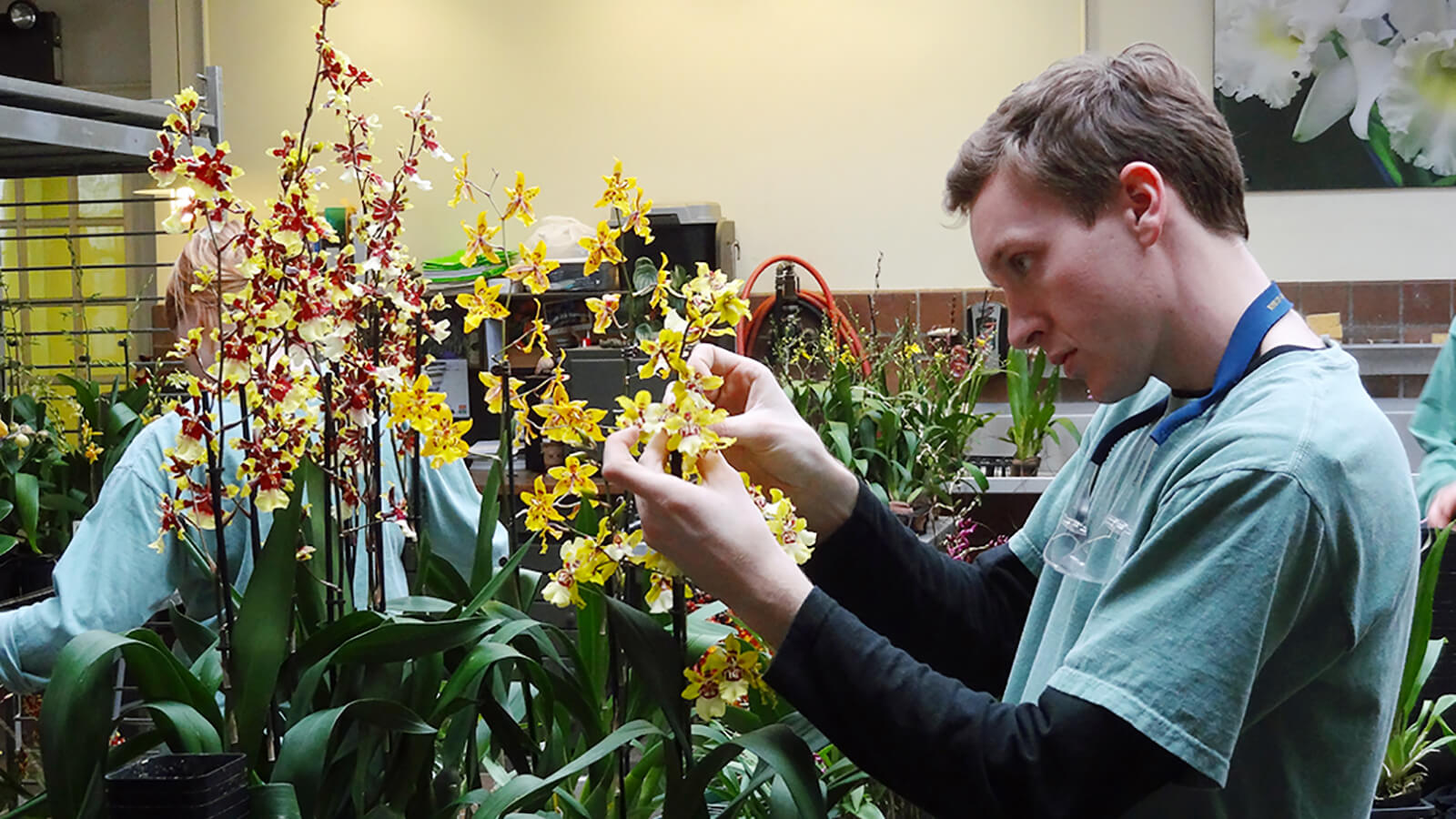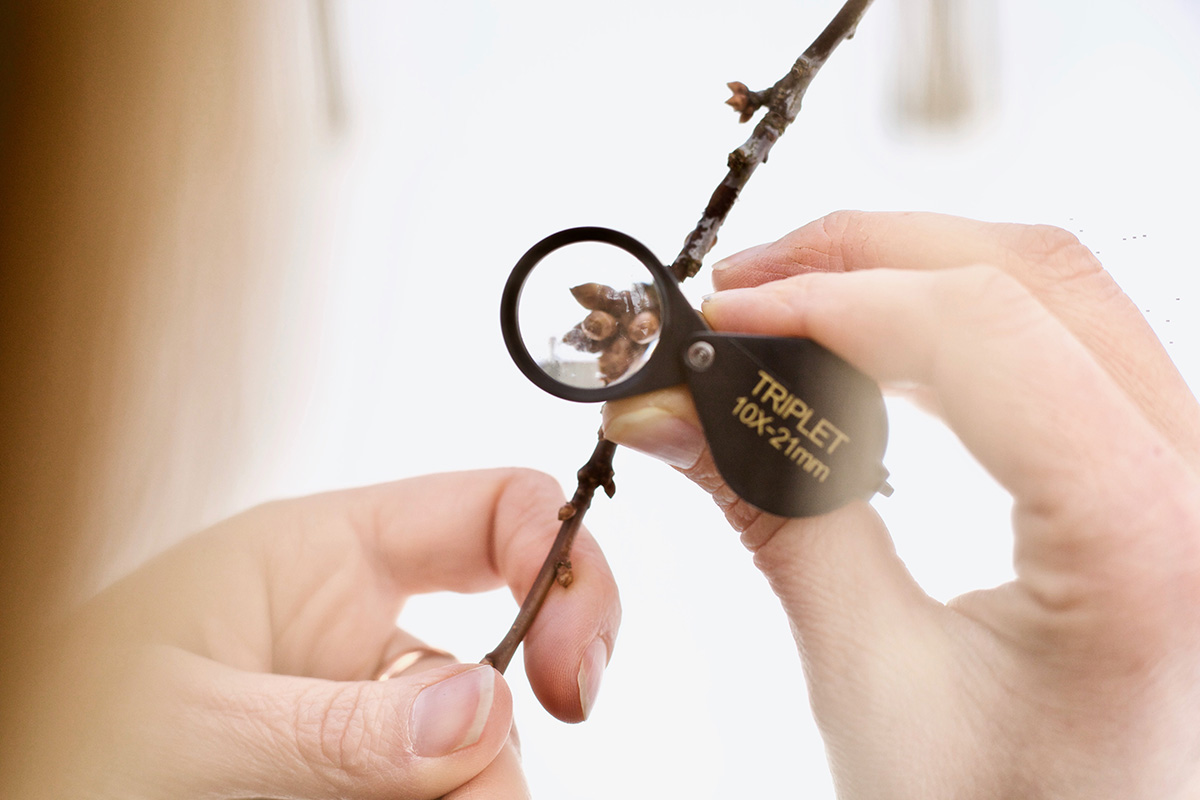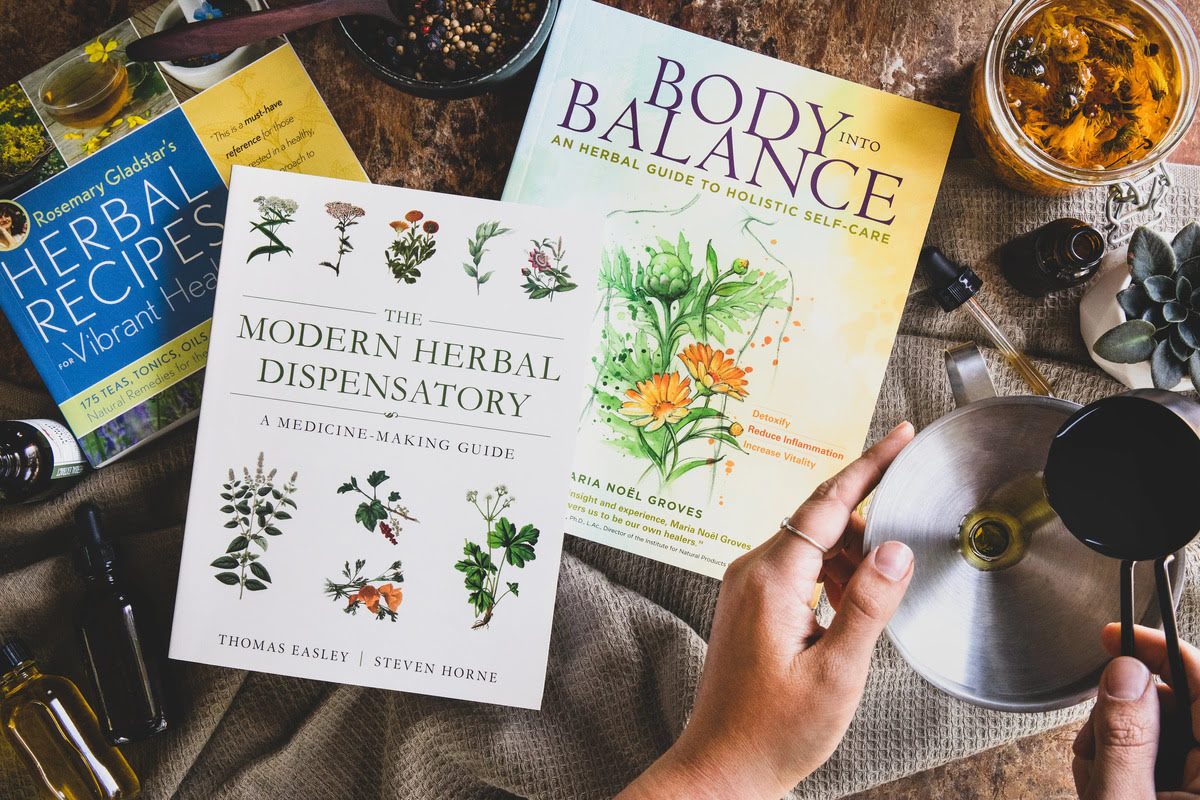Home>Gardening News and Trends>What Are Stamens In Botany


Gardening News and Trends
What Are Stamens In Botany
Modified: January 22, 2024
Discover the latest news about stamens in botany and their fascinating role in plant reproduction. Stay updated with the most recent developments in the botanical world.
(Many of the links in this article redirect to a specific reviewed product. Your purchase of these products through affiliate links helps to generate commission for Chicagolandgardening.com, at no extra cost. Learn more)
Table of Contents
Introduction
Botany, the scientific study of plants, encompasses a wide range of fascinating topics, from plant taxonomy and ecology to plant physiology and reproduction. While many people may be familiar with the broad concept of plant reproduction, there are specific aspects that deserve closer examination. One crucial component of plant reproduction is the stamen.
The stamen is an essential part of the reproductive structure in flowering plants, also known as angiosperms. It plays a vital role in the process of pollination, leading to the fertilization and subsequent production of seeds. Understanding the function and structure of stamens is crucial in unraveling the mysteries of plant reproduction and the diversity of plant species.
In this article, we will delve into the world of stamens in botany, exploring their definition, structure, functions, types, and importance in the overall reproductive process of flowering plants. By the end of this journey, you will have a deeper appreciation for the complexity and beauty of the stamen and its role in creating and sustaining the diverse flora around us.
Definition of Stamens
In the realm of botany, stamens are the male reproductive organs found in the flowers of angiosperms. They are typically composed of two main components: the filament and the anther. The filament is the long, slender stalk that supports the anther, which is the pollen-bearing structure.
The stamen is a crucial part of the flower’s reproductive system, working in conjunction with other floral organs, such as the pistil, to ensure successful pollination and seed formation. While the pistil represents the female reproductive organ, the stamen represents the male counterpart.
Stamens are usually found arranged in a whorl or circle around the central part of the flower, known as the pistil. The number and arrangement of stamens may vary depending on the species, with some flowers having a single stamen, while others can have multiple stamens.
Each stamen consists of three main parts: the filament, the anther, and the pollen. The filament is a slender stalk that supports the anther and positions it within the flower so that it can easily come into contact with pollinators like insects or birds. The anther, located at the top of the filament, contains microsporangia, which house the pollen grains.
Pollen grains contain the male gametes, or sperm cells, which are necessary for fertilization to occur. The transfer of pollen from the anther to the receptive surface of the pistil, known as pollination, is a crucial step in reproductive success. Once pollen reaches the pistil, it germinates and produces a pollen tube, which allows the sperm cells to travel to the ovule and fertilize the egg.
Overall, the stamen plays a vital role in the reproductive cycle of flowering plants, ensuring the transmission of male gametes and facilitating successful fertilization. Its structure and function are finely tuned to attract and interact with pollinators, leading to the creation of diverse and vibrant plant populations.
Structure and Components of Stamens
The stamen, as a male reproductive organ in flowering plants, has a well-defined structure and distinct components that contribute to its overall functionality. Let’s explore the key elements that make up the stamen.
The primary components of a stamen are the filament and the anther. The filament is a slender, elongated stalk that supports the anther. It is usually cylindrical or thread-like in shape and varies in length depending on the plant species.
The anther, located at the top of the filament, is the pollen-bearing structure of the stamen. It has a complex and intricate morphology that facilitates pollen production and release. The anther is typically composed of two lobes, called the thecae, joined by a connective.
Within the anther, microscopic structures called microsporangia are present. These microsporangia contain diploid cells known as microsporocytes, which undergo meiosis to produce haploid microspores. Each microspore then undergoes mitosis to form a pollen grain, which contains the male gametes.
The wall of the anther protects the developing pollen grains until they are fully mature and ready for dispersal. The anther’s outer layer, called the epidermis, consists of specialized cells with roles in protecting and shaping the anther. The inner tissues, known as the sporogenous cells, are responsible for the production and development of microspores.
Beneath the anther lies a sterile region known as the connective. It connects the two lobes of the anther and serves as a structural support. At the base of the filament, there may be a slight swelling called the gland or nectary. The nectary produces nectar, a sweet liquid that attracts pollinators to the flower.
The structure and components of stamens are intricately designed to optimize pollen production, protection, and dispersal. This ensures the efficient transfer of male gametes during the process of pollination, ultimately leading to successful fertilization and seed production.
Arrangement and Relation to Other Parts
The arrangement of stamens within a flower can vary among different plant species, and it often follows specific patterns. The stamens are typically found grouped together in a whorl or circle around the central part of the flower, known as the pistil. This arrangement is referred to as the androecium, which is the collective term for all the stamens in a flower.
The number of stamens in a flower can vary widely. Some flowers may have a single stamen, while others can have multiple stamens arranged in various patterns. For example, in flowers with radial symmetry, the stamens are often arranged in a circle or multiple circles, evenly spaced around the central pistil. In flowers with bilateral symmetry, the stamens may be grouped in pairs or arranged in a specific asymmetrical pattern.
The arrangement of stamens in relation to other floral parts is also significant. The stamens are typically positioned between the petals, which are the colorful, often showy structures that attract pollinators. The petals not only serve to attract pollinators but also provide a landing platform for them to access the stamens and the pistil.
In some cases, the stamens are fused with other floral parts. For instance, in some flowers, the stamens may be fused with the petals, forming a structure known as a staminal tube or corona. This fusion can create unique floral characteristics and may serve various functions, such as providing nectar guides or altering the flower’s shape to facilitate pollination.
The position of the stamens in relation to the pistil is essential for efficient pollination. In many flowers, the stamens surround the pistil closely, ensuring that pollen released from the anthers comes into contact with the receptive surface of the pistil. This proximity promotes the transfer of pollen during pollination, increasing the chances of successful fertilization.
The arrangement and relation of stamens to other parts in a flower are intricately structured to maximize the chances of pollination and successful reproduction. The strategic placement of stamens, along with their attractive features, ensures the proper transfer of pollen and the continuity of plant populations in a diverse range of ecosystems.
Functions of Stamens
Stamens play a crucial role in the reproduction of flowering plants, and their functions are essential for the successful fertilization and production of seeds. Let’s explore the key functions that stamens fulfill within the reproductive process.
1. Production of Pollen: The primary function of stamens is the production of pollen. The anthers within the stamens contain microsporangia, which house the pollen grains. These pollen grains contain the male gametes, or sperm cells, necessary for fertilization. Through the process of meiosis and subsequent mitosis, stamens ensure the continual production of pollen to support plant reproduction.
2. Pollen Dispersal: Stamens aid in the dispersal of pollen, facilitating its transfer from the anthers to the female reproductive organ, known as the pistil. Various mechanisms can help disperse pollen, including wind, water, and animal pollination. Some stamens have adaptations that promote efficient pollen release, such as pores or slits in the anther walls that allow the controlled expulsion of pollen.
3. Attraction of Pollinators: In addition to producing pollen, stamens often play a role in attracting pollinators. Pollinators, such as bees, butterflies, birds, or bats, are attracted to the floral structures that offer rewards like nectar or pollen. Stamens, sometimes adorned with bright colors, unique shapes, or fragrances, serve as visual and olfactory cues to attract and guide pollinators towards the flower.
4. Aid in Pollination: Stamens facilitate the transfer of pollen from the anthers to the pistil, a process known as pollination. The positioning of stamens within the flower ensures a high chance of pollen contact with the receptive surface of the pistil. Some stamens have specialized structures, such as hooks or hairs, that aid in the attachment of pollen to visiting pollinators, increasing the likelihood of successful pollination.
5. Genetic Variation: Stamens contribute to genetic variation in plant populations through sexual reproduction. During pollination, pollen from one plant is deposited onto the pistil of another plant, leading to the mixing of genetic material. This genetic diversity enhances the adaptability and resilience of plant populations to changing environmental conditions.
Overall, stamens fulfill vital functions in the reproductive process of flowering plants. From pollen production to pollinator attraction and efficient pollination, stamens are essential components that contribute to the successful reproduction and survival of diverse plant species.
Types and Variations of Stamens
Stamens exhibit a remarkable diversity in their form, structure, and arrangement among different plant species. This diversity reflects the incredible adaptability of flowering plants to their respective environments. Let’s explore some of the common types and variations of stamens.
1. Free Stamens: This is the most basic and common type of stamen, where each individual stamen is separate and distinct from the others. They are typically arranged in a circle or whorl around the pistil. Free stamens can be found in a wide range of plants, from simple flowers to more complex ones.
2. Connate Stamens: In some plants, the filaments of adjacent stamens may be fused or partially joined together, forming a connate or fused stamen. This fusion can vary in degree, with some filaments partially fused at the base while others may be completely fused along their entire length. Connate stamens often have distinct shapes and unique arrangements, enhancing the visual appeal of the flower.
3. Staminal Tubes: In certain plant species, the stamens fuse with the petals to form a tube-like structure known as a staminal tube or corona. Staminal tubes can take various forms, such as a cup, crown, or trumpet shape. These structures often play a role in attracting pollinators and guiding them towards the reproductive organs of the flower.
4. Staminodes: Staminodes are modified stamens that have lost their ability to produce pollen. They often have altered shapes, sizes, or colors compared to functional stamens. Staminodes can play a role in pollinator attraction, mimicry, or structural support within the flower. Some plants have fertile stamens along with staminodes, creating a diverse floral display.
5. Dimorphic Stamens: In certain plant species, flowers may exhibit dimorphic stamens, where two distinct types of stamens are present. The two types of stamens differ in length, position, or morphology. This dimorphism can serve various purposes, such as promoting outcrossing by attracting different pollinators or preventing self-pollination by separating male and female functions within the flower.
6. Reduced Stamens: In some flowers, stamens may be reduced in size or completely absent. These flowers often rely on other pollination mechanisms, such as wind or self-pollination, to ensure successful fertilization. Reduced stamens are common in plants with inconspicuous flowers or those adapted to specific pollination strategies.
The diverse types and variations of stamens highlight the incredible adaptability and evolution of flowering plants. Through these variations, plants have developed a myriad of strategies to attract pollinators, enhance reproductive success, and thrive in different ecological niches.
Importance of Stamens in Plant Reproduction
Stamens play a vital role in plant reproduction, contributing to the success and survival of flowering plants. They are indispensable in the intricate process of pollination and the subsequent production of seeds. Let’s explore the importance of stamens in plant reproduction.
1. Pollen Production: Stamens are responsible for producing pollen grains, which contain the male gametes necessary for fertilization. The production of pollen ensures the continued propagation of plant species and allows for genetic diversity through sexual reproduction.
2. Pollen Transfer: Stamens aid in the transfer of pollen from the anthers to the receptive surface of the pistil. This process, known as pollination, can occur through various means, including wind, water, or animal vectors like insects, birds, or mammals. By facilitating successful pollen transfer, stamens ensure that male gametes reach the female reproductive structures for fertilization to take place.
3. Genetic Variation: The transfer of pollen through stamens promotes genetic variation within plant populations. When pollen from one plant fertilizes the ovary of another, there is a mixing of genetic material. This genetic diversity allows plants to acquire new traits that might be advantageous for survival and adaptation to different environments.
4. Plant Reproductive Success: The effective functioning of stamens significantly contributes to the overall reproductive success of flowering plants. Well-developed stamens that produce abundant and viable pollen increase the chances of successful pollination and subsequent seed formation. This reproductive success ensures the survival and propagation of plant species in their respective habitats.
5. Pollinator Attraction: Many flowering plants rely on pollinators for the transfer of pollen, and stamens play a crucial role in attracting these pollinators. Through colorful petals, attractive fragrances, or specific shapes, stamens entice pollinators to visit the flower and facilitate the transfer of pollen. This mutualistic interaction between stamens and pollinators ensures the continuity of plant reproduction.
6. Environmental Interactions: The success of stamens in plant reproduction is also influenced by the surrounding environment. Factors such as temperature, humidity, light, and abiotic conditions can affect pollen production, viability, and pollinator activity. Understanding the relationship between stamens and their environment is crucial for predicting and managing plant populations in response to climate change and other environmental stressors.
The importance of stamens in plant reproduction cannot be overstated. Through their role in pollen production, transfer, and the attraction of pollinators, stamens ensure the continuity and diversity of flowering plant populations. Appreciating the significance of stamens allows us to better understand and appreciate the vital role they play in the natural world.
Conclusion
Stamens, as the male reproductive organs in flowering plants, are truly remarkable structures that hold immense importance in the world of botany. With their diverse forms, structures, and functions, stamens contribute significantly to the reproductive success and survival of plant species.
We have explored the definition of stamens and their key components, including the filament, anther, and pollen grains. We’ve examined how stamens are arranged in relation to other floral parts and the various functions they fulfill within the reproductive process.
From their role in pollen production and dispersal to attracting pollinators and aiding in successful pollination, stamens ensure the continuity of plant species through sexual reproduction. Their genetic variability and interaction with the environment are vital for adapting to changing conditions and promoting species diversity.
In addition to their biological significance, stamens also contribute to the beauty and diversity of the plant kingdom. Through their various types and variations, stamens create stunning floral displays that captivate both humans and pollinators alike.
Understanding the importance of stamens opens our eyes to the intricacies and wonders of plant reproduction. It allows us to appreciate the complexity and ingenuity of the natural world, where each component works together to ensure the survival and perpetuation of plant species.
As we continue to explore and study botany, delving into the fascinating aspects of plant reproduction, let us not forget the crucial role that stamens play. They are, indeed, the unsung heroes of botanical reproduction, facilitating the remarkable diversity and beauty we see in the flora around us.






